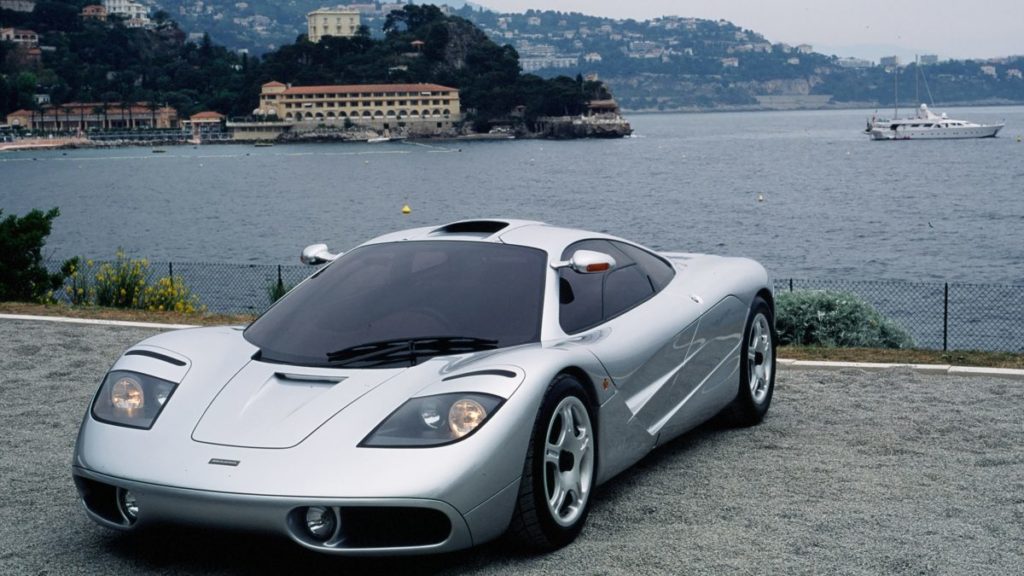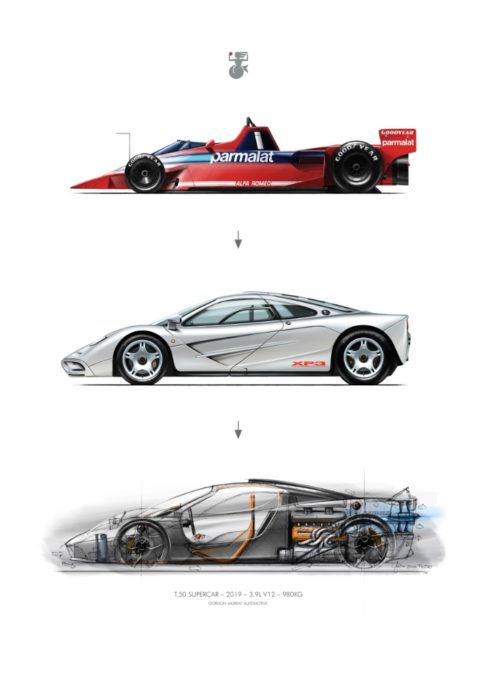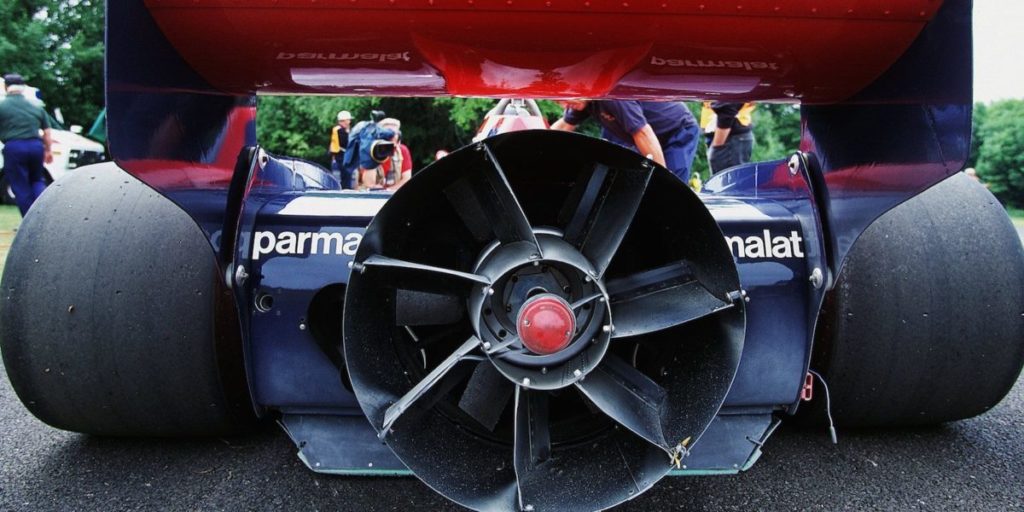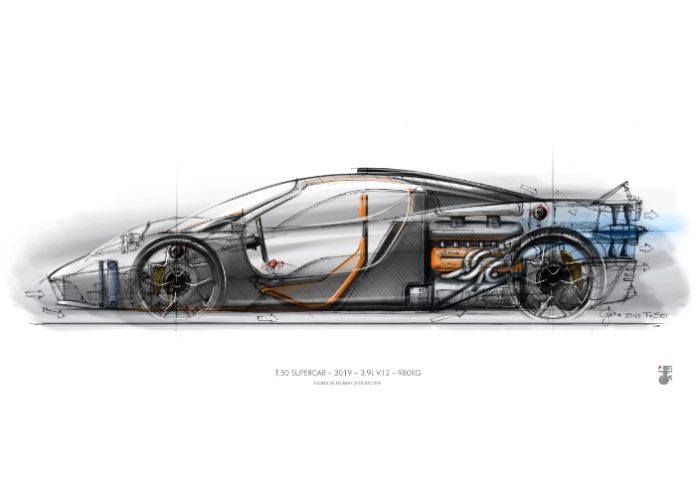Sit down and buckle up, because the car we’re going to talk about is incredible beyond your wildest imagination.
Gordon Murray has released a working sketch of his newest supercar – T.50. It’s a mid-engine, rear-wheel-drive, central monocoque layout. There are a naturally aspirated V12 engine, a manual gearbox and the most advanced aerodynamics ever used on a road car.
Although it boasts impressive numbers, some not available on any other road vehicle, T.50 is not going to be a numbers car.
Murray wants a vehicle that looks back on the driver and provides a refined, superb driving experience. He describes it as
“…the last, and the greatest, ‘analogue’ supercar ever built…”
Journalists have ruined the English language by slapping superlatives to every new car that comes out and not reserving at least a couple for vehicles like this one.
But, in order to fully appreciate his creation, a few words on the creator:
Gordon Murray created the Brabham “fan car”, McLaren F1 and Mercedes-Benz SLR McLaren

Murray spent more than two decades designing Formula One cars in the 70’ and 80’, working for Brabham and McLaren.
Prized for his innovative approach and audacious technical solutions, Gordon Murray became one of the most respected figures on the constructor’s side of Formula One.
His cars won 40 Grand Prix races and helped Nelson Piquet, Alain Prost and Ayrton Senna win a total of 6 Drivers Championship Cups.
After leaving Formula One in 1991, Murrey headed McLaren Cars and created some of the most cherished road supercars of all time – McLaren F1 and Mercedes-Benz SLR McLaren.
T.50 represents more than 50 years of motorsports design and engineering
The new T.50 is the spiritual successor of the McLaren F1, exceeding it in every possible dimension to create the ultimate road car.
It centers around a bespoke carbon fiber monocoque. Inside, the driver sits in a central position and there are two passenger seats as well as a luggage compartment.
Every component is designed specifically for this car, thus the packaging is optimized to fit a 3-seater, V12 supercar in a footprint smaller than Porsche 911.
The body is made from carbon-fiber panels. The exterior design is smooth and uninterrupted with a teardrop cockpit and beautiful arching front fenders.
There is little to no use of splitters, diffusers, flaps, gurneys, vents and other aerodynamic elements to break the silhouette. But, don’t be fooled!
T.50 will use the most advanced aerodynamics system in any road car ever produced
The low nose extends all the way to the rear quarter panels to create one big wedge shape, that will push the car down at high speeds. At the back, there is a small actuated wing, that engages with the brakes.

Most of the aerodynamics happen underneath the car, exploring an interesting phenomenon called ground force.
Looking at the sketch, you can’t miss the large, 15.7-inch fan located at the rear. It will suck air from underneath the car, accelerating the airflow and causing its pressure to decrease. In turn, this will pull the car toward the ground, producing downforce.
With a strong fan, specially shaped underbody and low ride height, you can increase the ground force dramatically, eliminating the need for wing-based aerodynamics.
Murray explored these principles back in the 70’. His most notorious F1 car is the 1978 Brabham BT46B later known as the “fan car”.

It incorporated a large fan, mechanically-linked to the engine, rotating at 12,000 RPM, pulling air from underneath the car and shooting it out the back. It produced so much downforce that the car dominated the track and won the Swedish GP outright with Niki Lauda at the helm.
Formula One banned the technology immediately after the race due to safety concerns, but the engineering was sound and the victory remained official.
McLaren F1 also used similar aerodynamics with two electric fans and specially designed underbody to increase the ground effect.
Gordon Murray is perhaps the biggest expert in this subject and the system used in T.50 will be his greatest design.
